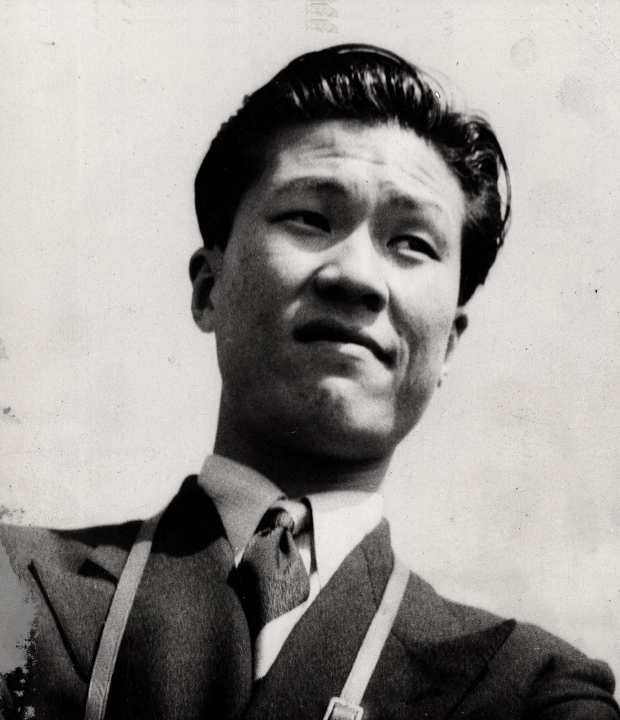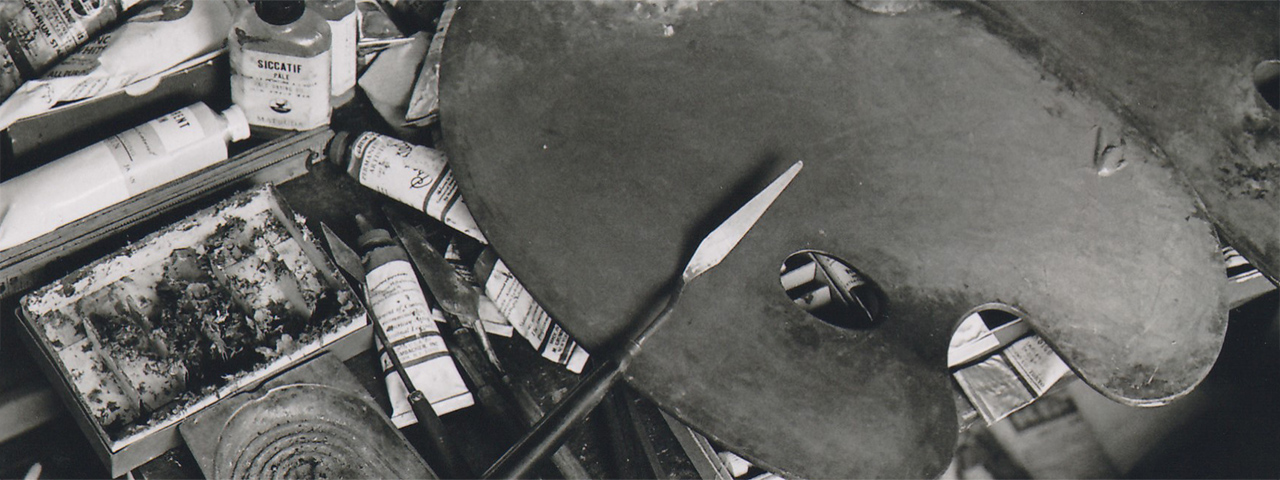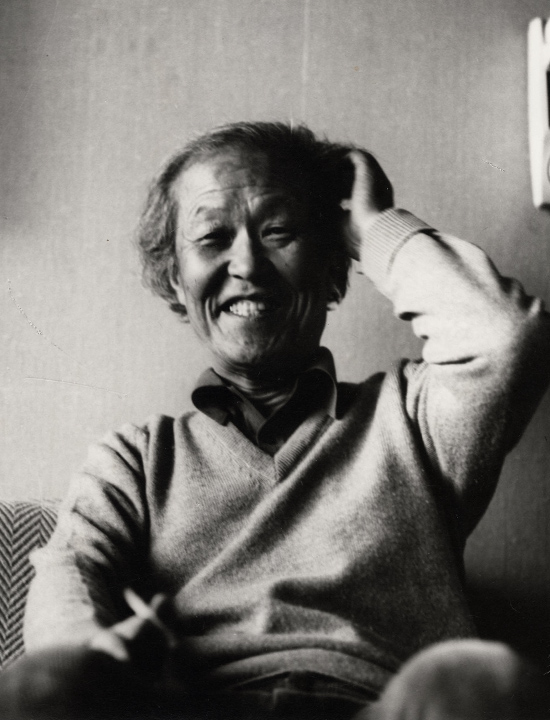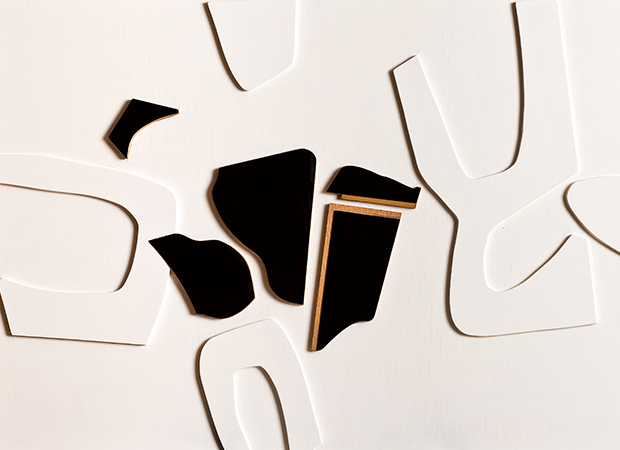Yoo YoungKuk

Korea's first abstract artist
Artist Yoo Youngkuk (1916-2002) is known as the pioneer of Korean abstract art based on the avant-garde aspects of Korean modern art. He is especially well known for his outstanding sense of representing Korea’s landscape and nature in abstraction through brilliant colors and bold forms. Born in the country’s southeastern city of Uljin, Gyeongsangbuk-do Province, home to country’s beautiful mountains and sea in 1916, Yoo began studying arts at the Tokyo Culture Institute in 1935. He also enjoyed exchanges with other well-known Korean artists including Kim Whanki, Chang Ucchin and Lee Jung Seob. During his time at the Tokyo Culture Institute, which boasted a relatively liberal style of painting, Yoo first attempted abstract painting, which was the most avant-garde art movement in the city back then.
In 1938, he received the Association Award from the 2nd exhibition hosted by the Association of Japanese Avant-garde Artists, and also worked and studied directly with the most influential leaders of Japanese abstract art– Masanari Murai(村井正誠, 1905-1999) and Saburo Hasegawa(長谷川三朗, 1906-1957). In the midst of the Pacific War, he returned to Korea in 1943, experiencing country’s regaining of independence as well as the Korean War. During such difficult times, he sustained himself and his family by fishing and brewing. In 1955, Yoo resumed painting in Seoul, becoming the leader of Korea’s most avant-garde groups such as New Realism, Modern Art Association, Contemporary Artists Exhibition, and New Figures, and being hailed as a true pioneer of Korean abstract art.
“The mountain is just another aspect of physics that have been endowed by nature. It could be an empty bowl of abstraction. It can also be under-interpreted to be a used pillow at an inn in the mountain side, facilitating friendly conversations all night long. The mountain changes whenever I look at it. Ultimately, the mountain is not something that lies ahead of me, but something that lies within me.”
(Oct. 1996. Excerpted from an interview with 'Monthly Art' )
Simplified Compositions and Brilliant Colors
Yoo Youngkuk’s works embody basic formal elements of point, line, plane, form and color. At times, there is a sense of tension and competition among them while they also maintain a certain sense of balance, thereby ultimately amplifying their innate energy. Although his works are reminiscent of the deep water, rugged mountains, clear valleys and red sun of his hometown Uljin, they are not just realistic depictions of the landscape. Nonetheless, the formative power of the abstract aesthetics rather inches closer to the essence of nature. His works represent the gradual abstraction process of natural elements that people come across on a daily basis including mountains, ocean, trees, hills, valleys and sunset.
Yoo seeks to strike an exquisite balance of colors and simplified forms, while exerting efforts to seek a martiere-style painting by maximizing surface texture representation. Yoo began to gradually simplify irregular forms into geometric shapes and mainly focused on the primary colors – yellow, red and blue – but also played with his very unique variations of purple and green. Even within a single artwork dominated by the color red, Yoo played with different shades of red: slightly brighter red, dark red, murky red and deep red. By doing so, he intended to represent a tangible tension and a superb balance. As such, Yoo’s works were approaching the highest level of aesthetical beauty that paintings may ever achieve.
Photo by Limb Eung Sik, PHOTOARCHIVES OF LIMBEUNGSIK

“Color, is something that is very fun when you begin to use it. You need to bring in this color to make this and that more vivid… The same goes for paintings as well. As for music, when you listen to a symphony, the melody flows and suddenly it does the “Tadada Ta!” Likewise, I believe that paintings should also act as a stimulus to the viewers. Since it is a form of visual art, it has nothing to do with the mouth or ears, and this is why colors are essential. It may differ by person to person, but I believe that colors need to be composed to strike a balance and harmony. It cannot be calculated in detailike mathematics… but this is what think."

Endless Art and Life
By the 1960s, Yoo Youngkuk has emerged as the most admired role model among young generation artists who sought to represent Korean abstract and avant-garde art. Leading the Contemporary Artists Association in 1960, Yoo began partaking proactively in ‘contemporary’ art movements. In 1964, however, he announced an end of his association to such art groups, and held his first solo exhibition with 15 new works at the Korea Press Center, and thus shocking the Korean art circles. The works he produced at this period of time involved large canvases that reveal the vivid natural scenes of all distinct seasons, seen from a bird’s-eye view, enabling audiences to feel as if massive landscape is unfolding in front of them.
Preparing for his solo exhibition in 1964, Yoo exerted his intense spirit and focus to produce works that led the audience to feel a sense of illusion that they are being engulfed by a deep forest. Since then onwards, he completely devoted himself to the creation of art within a strict daily routine and embodying a sense of duty and diligence of a manual laborer.

Just as he once had mentioned that "he would softly return to nature after studying the basics until the age of 60,” his works testify that he continued to be involved in ceaseless formative experiments until he turned 60 in the mid-1970s. He died at the age of 87. Even when he was battling against deteriorating health for a long time, Yoo continuously produced serene and beautiful paintings, representing his desire to “softly return to nature.” His final works, involving mountains and trees, lakes and sees, horizons of land and water, and above all, the reflections of the sun and moon, depict his aspirations of seeking a perfect ‘equilibrium’ with a supreme peace and harmony of nature.
The canvases that Yoo re-encountered whenever he was standing on the verge of death even convey a warm comfort of life to the viewers. While living through the most turbulent times in Korean modern and contemporary history, Yoo never ceased his endeavors for life and art creation until he was close to the peak of what he regarded as ‘absolute abstraction’. This indeed reflects the life of Yoo, which was fierce and competitive as an artist but also very much restrained.
Although I lived through an era during which paintings did not sell well, I am not confined in the thought that they must be sold. By doing so, I was able to think and do the painting to that extend whichever I’ve been wishing to.
There was no need to rush and I did not have sufficient materials like paint and canvases like it is now. Therefore, I had plenty of time to think.


